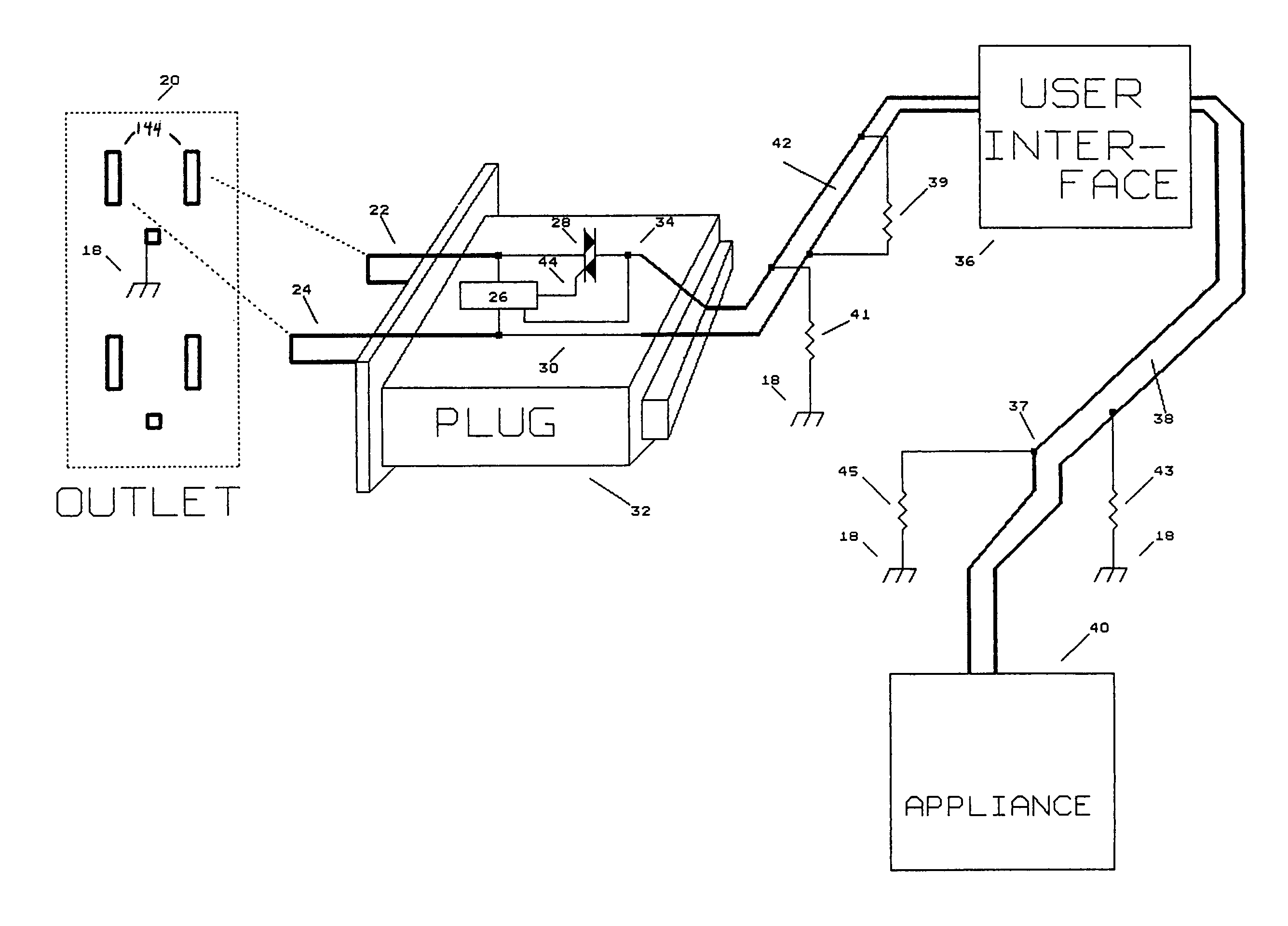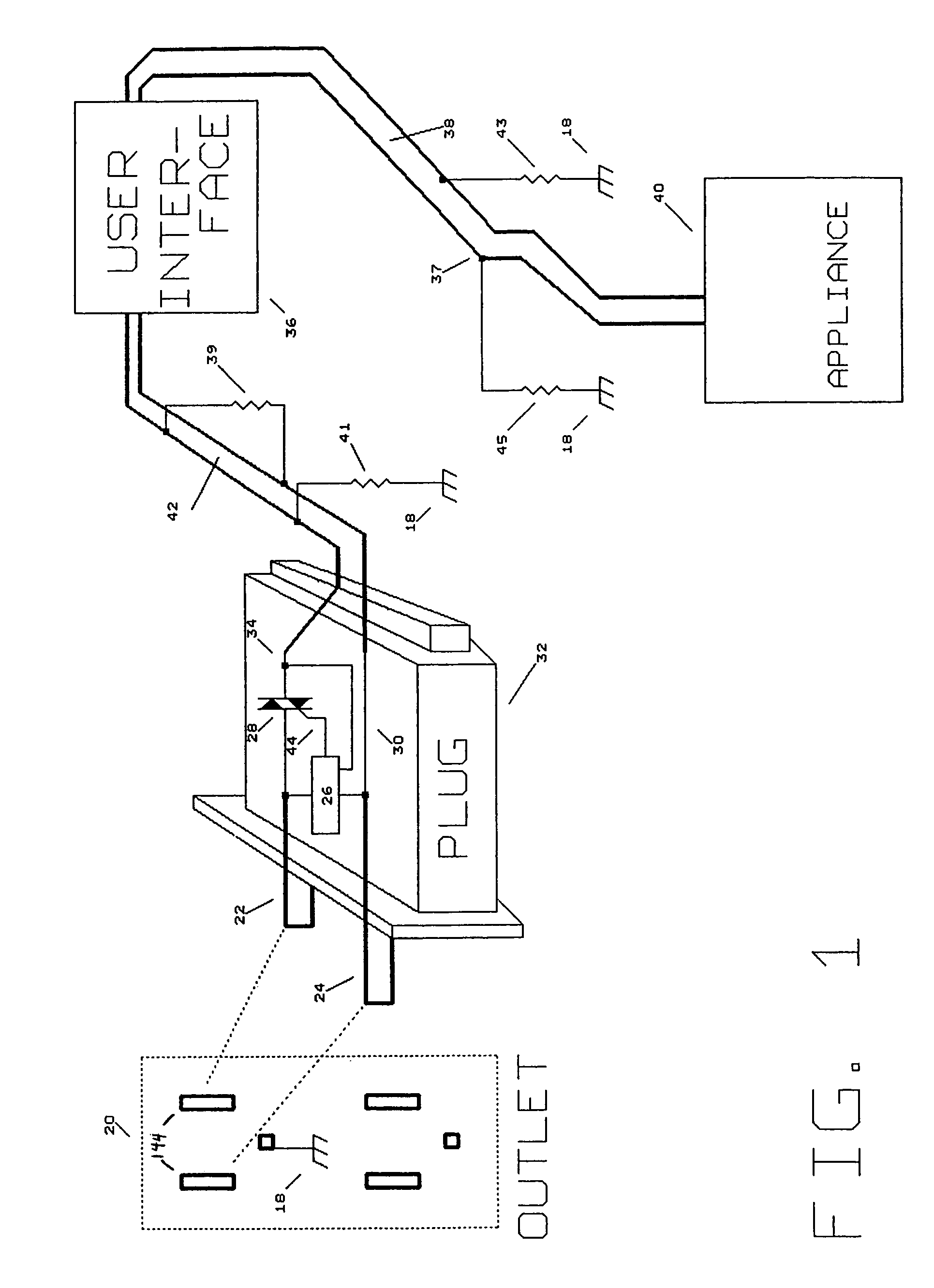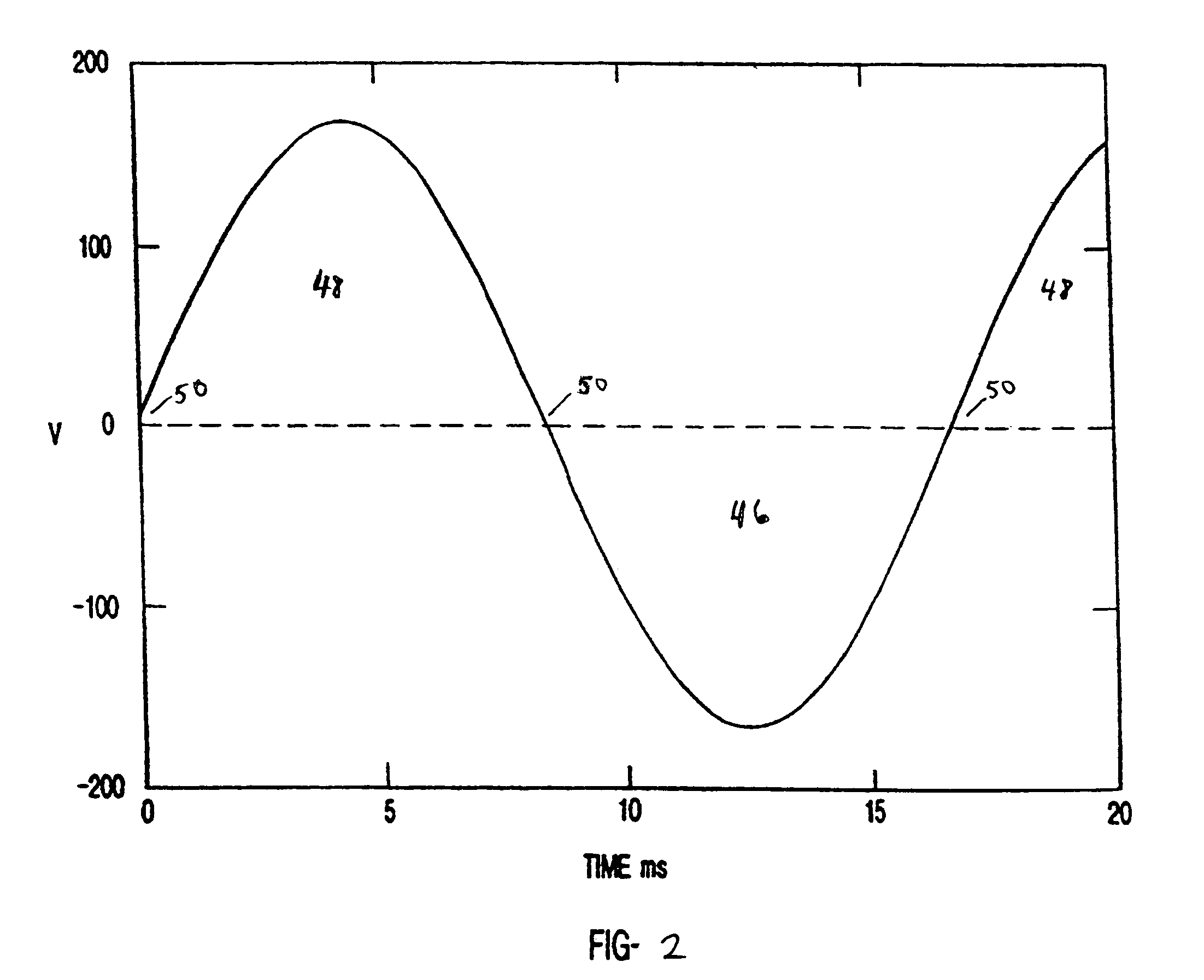Cordset based appliance controller
a technology of appliance controller and cordset, applied in the field of electronic control, can solve problems such as luminous discharge, permanent entry of the fuse, and injury or death
- Summary
- Abstract
- Description
- Claims
- Application Information
AI Technical Summary
Benefits of technology
Problems solved by technology
Method used
Image
Examples
Embodiment Construction
[0134]The present invention is of a method and apparatus for AC appliance control preferably utilizing a minimum of electrical conductors connecting between plug and a user control module and between the user control module and the load. Information is transferred bidirectionally via “deadzones” that are imposed upon the AC load current. In some embodiments, if there is some current flow during a time when a deadzone should occur, this is indicative of a fault condition, either unintentional (as when an undesirable leakage path to ground occurs) or intentional (for example with faults that are deliberately applied using switch closures to impose momentary fault conditions). In other embodiments, by controlling deadzones of AC power to have different lengths, then user inputs, appliance status, and other information may be sent to a remotely located controller or to other locations in the appliance or cordset, without the requirement for additional power conductors. By imposing signa...
PUM
 Login to View More
Login to View More Abstract
Description
Claims
Application Information
 Login to View More
Login to View More - R&D
- Intellectual Property
- Life Sciences
- Materials
- Tech Scout
- Unparalleled Data Quality
- Higher Quality Content
- 60% Fewer Hallucinations
Browse by: Latest US Patents, China's latest patents, Technical Efficacy Thesaurus, Application Domain, Technology Topic, Popular Technical Reports.
© 2025 PatSnap. All rights reserved.Legal|Privacy policy|Modern Slavery Act Transparency Statement|Sitemap|About US| Contact US: help@patsnap.com



